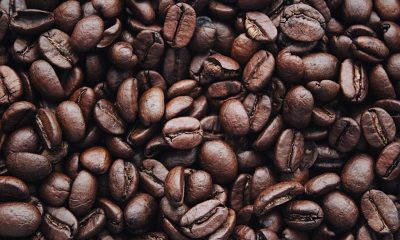How birds fuel up themselves for long-distance mass migrations
"Birds are amazing animals. They are extreme endurance athletes."
Published
1 year ago onBy
Talker NewsBy James Gamble via SWNS
The surprising way migratory birds muster the energy to endure cross-continental flights thousands of miles long has been discovered.
An American research team observed migratory birds in flight and found they burn vast amounts of protein early on in their journeys.
The breakthrough study has turned existing theories - which presumed migrating birds ramped up their protein consumption towards the end of their journey - completely on its head.
The scientists also discovered that birds burned fat at a consistent rate throughout their Odyssean flights and that they can burn a fifth of their muscle mass and build it back up in a matter of days.
Though the researchers admit they don't yet know exactly why the birds burn protein so early in their journeys, the possible answers open up a wide range of future research avenues.
To conduct their experiment, the study team led by researchers at the University of Massachusetts Amherst (UMass Amherst), captured dozens of migrating birds.
These birds, captured at the Long Point Bird Observatory in the central Canadian province of Ontario using "mist nets," were comprised of 20 blackpoll warblers - small songbirds which migrate each autumn from as far as Alaska in North America to the northernmost regions of South America - and 44 yellow-rumped warblers, a shorter-distance migrant.
Many songbirds in North America make twice-yearly, non-stop migratory flights of more than 1,000 miles to travel from their breeding to their winter grounds - flapping their wings for incredible stints of up to 100 hours without rest.
The study team then transported these birds to the Advanced Facility for Avian Research at Western University in Ontario, which boasts a specialized wind tunnel for observing birds in flight.
The researchers measured the birds' fat and lean body mass prior to their flight and, after waiting for the sun to set - because the birds migrate at night - let them loose in the wind tunnel.
The team would then stay awake - at one point for an impressive stint of 28 hours - watching for when a bird would decide to take a rest.
At this point, the scientists would collect the resting bird to again measure its fat and lean body mass content.
On comparing these measurements with those taken pre-flight, the scientists discovered that the birds fueled themselves by burning lots of fat and a surprising amount of protein early on in their flights, as they needed to use every ounce of muscle to continuously flap their wings.

Dr. Cory Elowe, the paper’s lead author and a postdoctoral researcher in biology at UMass Amherst, explained why the results were so surprising.
He said: "Birds are amazing animals.
"They are extreme endurance athletes; a bird that weighs half an ounce can fly, non-stop, flapping for 100 hours at a time, from Canada to South America.
"How is this possible? How do they fuel their flights?
"The birds in our tests burned fat at a consistent rate throughout their flights.
"But we also found that they burn protein at an extremely high rate very early in their flights, and that the rate at which they burn protein tapers off as the duration of the flight increases.
"One of the biggest surprises was that every bird still had plenty of fat left when it chose to end its flight.
“But their muscles were emaciated. Protein, not fat, seems to be a limiting factor in determining how far birds can fly."
Alexander Gerson, an associate professor of biology at UMass Amherst and the paper’s senior author, added: "This is a new insight.
"No one has been able to measure protein burn to this extent in birds before.
"We knew that birds burned protein, but not at this rate, and not so early in their flights.
“What’s more, these small songbirds can burn 20 percent of their muscle mass and then build it all back in a matter of days."
Despite the researchers admitting they don't yet know quite why the birds burn such vast amounts of protein early on in their migratory journeys, they add that the possible answers throw open a wide range of future avenues of research.
Dr. Gerson questioned: "How exactly is it possible to burn up your muscles and internal organs and then rebuild them as quickly as these birds do?
"What insights into the evolution of metabolism might these birds yield?".
Dr. Elowe adds the shivering of birds to stay warm during winter is also a subject deserving of further research, saying: "This is also a feat of endurance.
"Do birds fuel their winter shivering spells the same way as migrating?
"And, as the world warms, which method of coping with the cold - shivering or migrating - might be the better option for survival?”
The study's results were published recently in the scientific journal Proceedings of the National Academy of Sciences.
Stories and infographics by ‘Talker Research’ are available to download & ready to use. Stories and videos by ‘Talker News’ are managed by SWNS. To license content for editorial or commercial use and to see the full scope of SWNS content, please email [email protected] or submit an inquiry via our contact form.
You may like


Cancer survivors from poorer places at higher risk of second cancer


Scientists estimate as much as 11M tons of plastic sitting on ocean floor


Scientists say this disease most likely to cause next global pandemic


Study finds longest recorded COVID infection lasted nearly two years


Scientists create family tree of coffee for clues to resist climate change


Tiny ingestible beads could help fight liver disease: study
Other Stories


Blood test can detect signs of knee condition 8 years before X-rays
Early detection could lead to treatments that slow the progression of the most common form of arthritis.


Man captures ultra rare albino squirrel on camera
The white squirrel has red eyes so is thought to be an albino squirrel.


Adorable dog kicks his leg while he walks
A video captured the pup bouncing along the street of his native China.


Woman with rare ‘Sleeping Beauty’ condition sleeps every four hours
She was diagnosed at age 18 after years of struggling to stay awake in school and nodding off during class.


97-year-old veteran receives WWII service medal 80 years later
"We’re all so proud of Eve."
Top Talkers

 Parenting1 week ago
Parenting1 week agoSingle mom details struggles of feeding her 12 kids

 Lifestyle1 week ago
Lifestyle1 week agoWoman regrets her tattoo nightmare: ‘It’s horrendous’

 Wildlife4 days ago
Wildlife4 days agoClever elephant returns visitor’s shoe that fell into enclosure

 Health5 days ago
Health5 days agoNew study reveals ‘old age’ begins later than it used to

 Good News5 days ago
Good News5 days agoDisabled student takes first steps in 10 years on graduation stage

 Animals14 hours ago
Animals14 hours agoAdorable dog kicks his leg while he walks

 Entertainment2 days ago
Entertainment2 days agoWhat is the perfect movie length?

 Broadcast19 hours ago
Broadcast19 hours agoAre allergies interfering with your social life?

